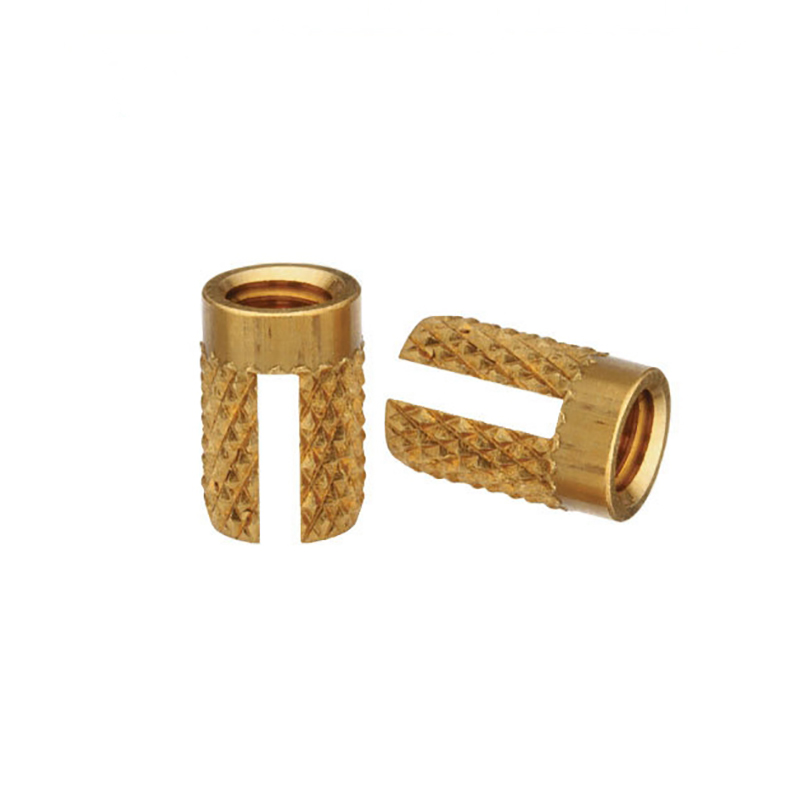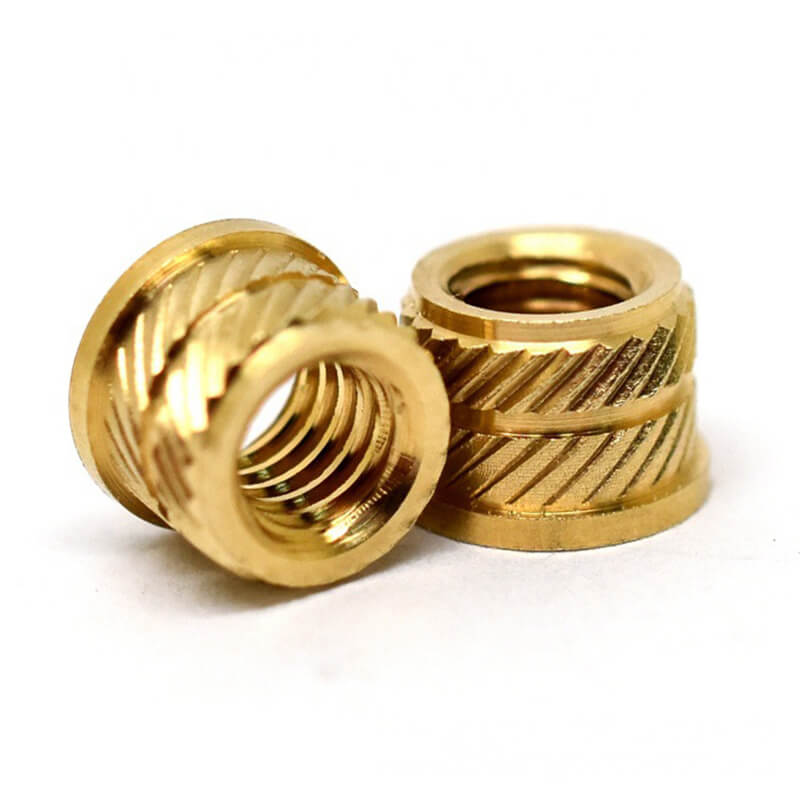At present, the standard parts on the market are mainly carbon steel (including easy car steel), stainless steel (including easy car stainless steel), copper (including fast cutting copper).
1. Carbon steel. We distinguish low carbon steel, medium carbon steel and high carbon steel and alloy steel by the content of carbon in carbon steel material.
(1) low carbon steel C%≤0.25% domestic usually called A3 steel. It is basically called 1008,1015,1018,1022 and so on. Mainly used for 4.8 class bolts and 4 class nuts, small screws and other products without hardness requirements. (Note: Drilling nails mainly use 1022 material.)
(2)medium carbon steel 0.25%<C%≤0.45% domestic usually called 35, 45 steel, foreign basically called 1035, CH38F, 1039,40 ACR and so on. Mainly used for class 8 nuts, Class 8.8 bolts and class 8.8 hex socket products.
(3)high carbon steel C%>0.45%. At present, there is little use in the market
(4)alloy steel: Add alloying elements to carbon steel to increase some special properties of steel: such as 35, 40 chromium molybdenum, SCM435, 10B38. Fangsheng screws mainly use SCM435 chrome-molybdenum alloy steel, the main components are C, Si, Mn, P, S, Cr, Mo.
2.Stainless steel. Performance levels: 45,50,60,70,80
The main austenite (18%Cr, 8%Ni) has good heat resistance, good corrosion resistance and good weldability. A1, A2, A4
Martensite, 13%Cr poor corrosion resistance, high strength, good wear resistance. C1, C2, C4 ferritic stainless steel. 18%Cr has better upsetting property and corrosion resistance than martensite. At present, imported materials on the market are mainly Japanese products. The main grades are SUS302, SUS304, and SUS316.
3. Copper. The common material is brass… Zinc copper alloy. The market mainly uses H62, H65, H68 copper as standard parts.
Second, carbon steel products used in the disk element:
| Species | Optional material |
| Pressure fasteners | Fast cutting steel 12L14 1215 11L44(turning class, such as B SO type, DSO etc.), SUS303, SUS304 (CLS, etc.),10B21 (FH HFH, etc.) |
| Copper nut for injection molding | Quick cutting copper C3604 lead-free copper, stainless steel SUS303 |
| 8.8 hexagon bolt | 1035ACR(below M10)1040ACR (above M12) CH38F 1045ACR 1039 10B21 (mainly this) 10B33 10B38 |
| 8.8 inner hexagon bolt | CH38F 1039 10B21(M10-M12) 10B33 (M14)10B38(M12-M24)10B21 |
| 10.9 hexagon bolt | 1045ACR 10B38 |
| 12.9 Grade | Alloy steel 35CrMo 40CrMo 42CrMo |
| Grade 8 nut | 1008K 1010 |
| Grade 8 nut | 1015(M<16) CH38F (M≥16) |
| Grade 10 nut | CH38F 1039 10B21 10B33 |
| Grade 12 nut | 1039 10B21 10B33 10B38 |
| Carriage bolts | 1008 1010 1015 |
| Hex flange convex bolt | CH38F 1039 10B21 10B33 10B38 |
| Hexagon wood screw | 1008K 1010 |
| Self-tapping screw, wall board screw | 1018 1022 CH22A |
| Drill tail screw, splint screw | |
| Machine screw furniture screws | 1008 1010 |
Three, influence on the properties of the steel material in all kinds of elements:
(1)carbon (C) : improve the strength of steel, especially its heat treatment performance, but with the increase of carbon content, plasticity and toughness decline, and will affect the cold heading performance and welding performance of steel.
(2) manganese (Mn) : improve the strength of steel, and to a certain extent, improve the hardenability. That is, it increases the strength of hardened infiltration during quenching, and manganese can also improve the surface quality, but too much manganese is detrimental to ductility and weldability. And affect the plating coating of the control.
(3) nickel (Ni) : improve the strength of steel parts, improve the toughness at low temperature, improve the ability to resist atmospheric corrosion, and can ensure the stable heat treatment effect, reduce the role of hydrogen embrittance.
(4)chromium (Cr) : can improve the quenchability, improve wear resistance, improve corrosion resistance, and is conducive to maintaining strength at high temperature.
(5) molybdenum (Mo) : can help to control the quenchability, reduce the sensitivity of steel to tempering brittleness, to improve the tensile strength at high temperature has a great impact.
(6)boron (B) : to improve the hardenability, and help to make low carbon steel to produce the desired reaction heat treatment.
(7) alum (V) : refine austenite grain, improve toughness.
(8)silicon (Si) : to ensure the strength of the steel, the appropriate content can improve plasticity and toughness of the steel.
Four, about the characteristics of stainless steel (304, 316)
(A) The three materials are 300 series of austenitic stainless steel, the chemical composition is as follows:
| Item | C | Si | Mn | P | S | Ni | Cr | Mo | Cu |
| 304M | ≤0.06 | ≤1.0 | ≤2.0 | ≤0.045 | ≤0.03 | 8.91-10.0 | 18.0-20.0 | 0 | 0 |
| 316 | ≤0.03-0.06 | ≤1.0 | ≤2.0 | ≤0.045 | ≤0.03 | 10.0-14.0 | 16.0-18.0 | 2.0-3.0 | 0 |
| 304HC | ≤0.08 | ≤1.0 | ≤2.0 | ≤0.045 | ≤0.03 | 8.0-10.5 | 17.0-19.0 | 0 | 1.0-3.0 |
(B) the main chemical composition and performance of stainless steel.
1, carbon can increase hardness and strength, too high content will reduce its ductility and corrosion resistance
2, chromium can increase the corrosion resistance, oxidation resistance, make the grain refinement, increase strength, hardness and wear resistance
3, Ni can increase the high temperature strength, corrosion resistance, decrease the rate of cold hardening
4, Mo increases the strength, excellent corrosion resistance to oxides and seawater
5, copper is conducive to cold processing molding, reduce magnetic












